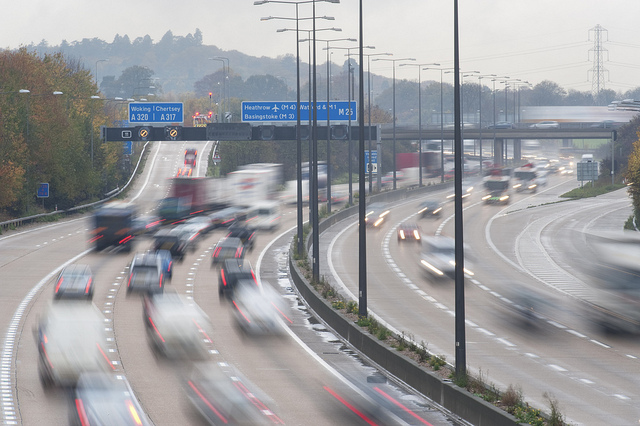
Bittersweet EU-decision on lorry design and cycling fatalities
New lorry design is coming in the European Union which will make it easier for Heavy Goods Vehicles' drivers to spot and avoid bicycles and motorcycles on the roads. However, after heavy lobbying from manufacturers the amendments will only enter into force in 2022. ECF has long been calling for better direct vision around all lories.
 Flickr/Highways Agency
Flickr/Highways Agency
The European Parliament approved changes for new Heavy Goods Vehicles (HGV) design on 10 March. According to the newly rubber stamped amendments, new lorry designs will include rounded front cabs and aerodynamic flaps at the back of the vehicles for example. It has been argued that these changes will help lorry drivers reduce accidents by making it easier to spot and avoid bicycles and motorcycles on the roads. (For ECF's press relase on the EP's approval please click here).
The approval of the new design features are good and bad news too in ECF’s opinion. The good news is that safety will be part of the EU directive, however bad news is that after heavy lobbying by the manufacturers member states insisted on no changes before 2022.
Small percent of the vehicle fleet but involved in more fatal collisions
It should be noted, HGVs make up around 3 percent of the vehicle fleet and 7 percent of driven kilometres, yet they are involved in about 18 percent of all fatal collisions, costing over 7000 lives across the EU every year. Some 22 percent of cycling fatalities are as a result of collisions with a goods vehicle. This figure is 43 percent in Belgium, 38 percent in the Netherlands and 33 percent in the UK and Denmark.
What's wrong with the indirect vision of mirrors? Why there are more cyclists killed by lorries than by buses, coaches? Read more on these issues here and here.
ECF has been calling for better direct vision around all HGVs. In Europe currently there are indirect (use of mirrors, cameras etc.) vision specifications in place with regulations that specify which mirrors to use. On the other hand there is nothing with regards to the direct vision of how the driver can see out of the cab window (unlike motor cars that do have direct vision requirements).
What changes are needed?
The European Cyclists' Federation has documented some of the issues with relying on indirect vision, incorrectly adjusted mirrors, broken mirrors, the time delay in checking up to 6 mirrors, warped mirror shape etc. ECF also thinks that
- cab of the majority of lorries are too high,
- eye line of driver in these cabs is getting on 3 metres from the ground,
- the bottom lip of the side window is at 2.5 metres,
- if these HGVs are allowed into urban ares cab heights are needed to be brought down,
- and introduce better windscreens window side panels.
Urban driving also requires communication with other road users, it involves eye contact, hand signals, road users must be able to see around their vehicle and these changes and ECF's proposed lorry design features could result in safer roads for bikers.
About the author:
 Ceri Woolsgrove is ECF's Road Safety & Technical Issues Policy Officer, he works on everything from road safety through HGV design to helmets.
Ceri Woolsgrove is ECF's Road Safety & Technical Issues Policy Officer, he works on everything from road safety through HGV design to helmets.
- Log in to post comments
Contact the author
Recent news!
Upcoming events
Contact Us
Avenue des Arts, 7-8
Postal address: Rue de la Charité, 22
1210 Brussels, Belgium









